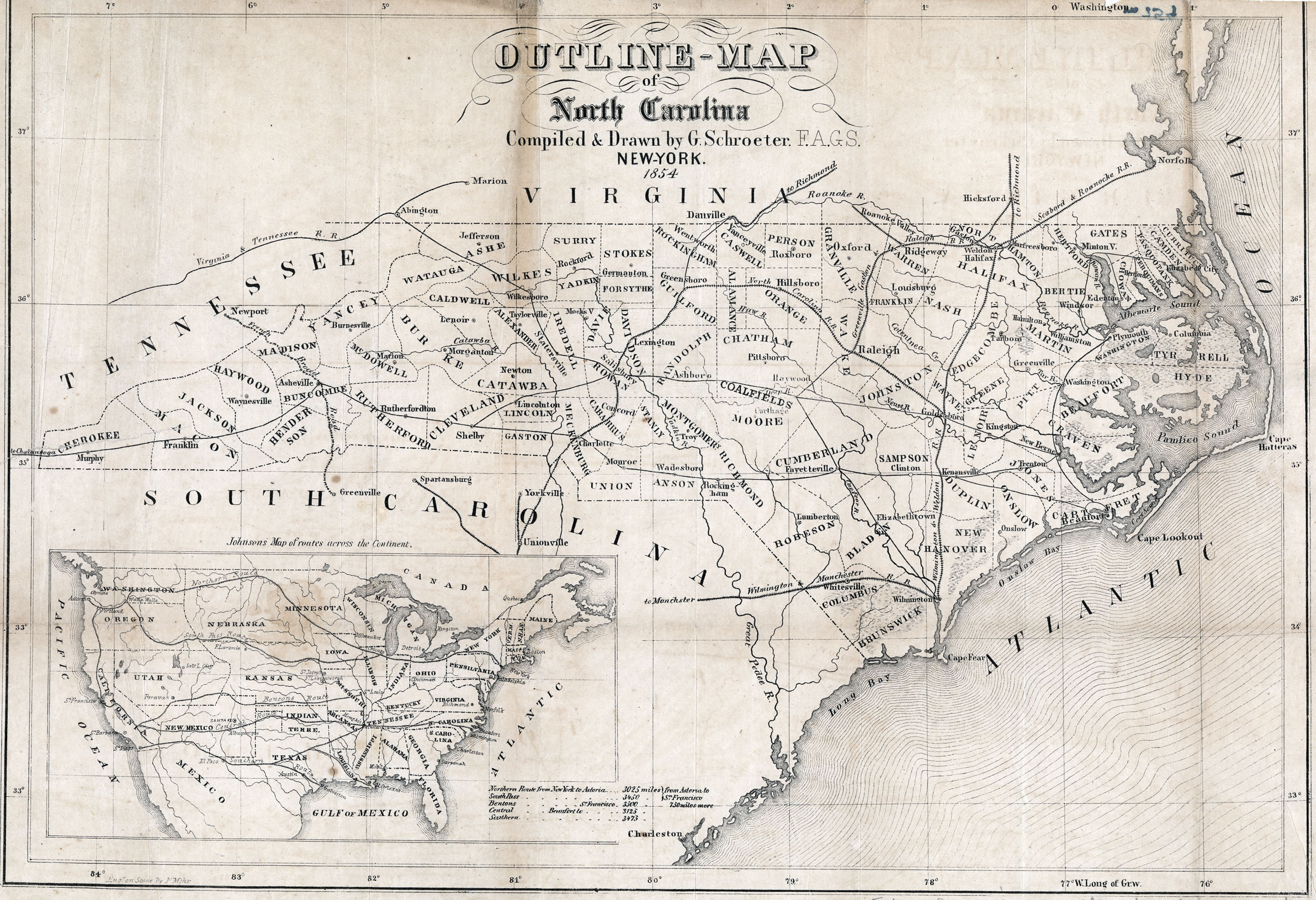In 1840 the longest railroad in the world opened in North Carolina, running from Wilmington in New Hanover County to Weldon in Halifax County via Goldsboro and Rocky Mount. The Wilmington and Raleigh Railroad Company designed and built the railroad which, at 161½ miles, was longer than any other track in the world. The Wilmington and Raleigh Railroad was originally chartered to connect the state’s largest port city, Wilmington, with the capitol city, Raleigh, but the track was rerouted to Weldon instead of Raleigh. The Wilmington and Raleigh Railroad was officially renamed the Wilmington and Weldon Railroad in 1855.
On December 30, 1833, the North Carolina General Assembly approved the charter which was amended in 1835 to change the terminus to Weldon. In addition to the lack of financial support for the project from Raleigh citizens, the founders of the Wilmington and Raleigh Railroad hoped to capitalize on the plentiful industry and agriculture of the Roanoke River valley and points north. In 1836, the Wilmington and Raleigh incorporated into their company the interests of the Halifax and Weldon Railroad, a short road track connecting the two cities in Halifax County. Weldon became a railroad hub for eastern North Carolina, providing access to areas throughout North Carolina and Virginia.
Construction began on the Wilmington and Weldon line, as it had become popularly known, in 1836. The company remained private, under the leadership of its first president, Edward B. Dudley. The state provided the private railroad company with extensive financial support, owning forty percent of the stock interest in the company, and assisting with the railroad line’s maintenance until it became profitable after 1850.
The Wilmington and Weldon line opened in May 1840, with the first trip conducted by William Hall. The company grew and by 1860 the year with a 15 ½ % profit on its capital stock. The Wilmington and Weldon line was also essential to the Confederacy during the Civil War, becoming known as the “lifeline of the Confederacy.” The line moved goods and supplies from the single open Confederate port of Wilmington to Robert E. Lee’s Army in Virginia and throughout the Confederacy. The fall of Wilmington, denying access to the Wilmington and Weldon Railroad, was a major factor leading up to Lee’s surrender at Appomattox.
Source Citation:
"Wilmington and Weldon Railroad." North Carolina Highway Historical Marker Program. Accessed May 03, 2019. http://www.ncmarkers.com/Markers.aspx?MarkerId=E-23.

